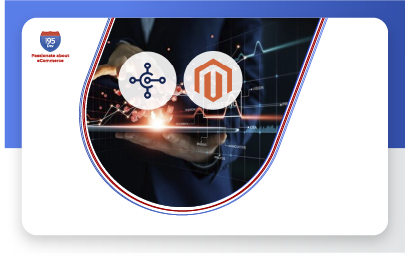Establishing a scalable stable e-commerce business for your brand is no easy task. No matter how long you deliberate and how many options you evaluate, you are likely to face hiccups along the way. While it is difficult to predict and avoid all problems, some commonly committed errors can be easily avoided.
In this article, we will look at 6 mistakes that you must avoid right in the very beginning, even before you start looking at options for your e-commerce store. Remember, Sound knowledge of your business objectives and requirements sets the base for a successful e-commerce store.
1) Unclear vision for E-commerce – its role in the overall business strategy
An e-commerce store can help you achieve a lot of things – it will help you get into newer markets, reach your customers easily, reduce the cost of customer acquisition, and more. But, what really matters is the reason why you want to adopt e-commerce? Because if the vision is not clear or not clearly defined then you are setting yourself for failure.
For example, if the only reason for adopting e-commerce is because your competitors are doing it then you will never ensure to have the right budget in place, right team is in place, etc. Hence, before anything else, it is important to clearly articulate the reason for adopting e-commerce and where it fits into the overall business strategy.
Knowing and understanding your business case for implementing the e-commerce and aligning it with your organizational goals, helps in accurately identifying all stakeholders, set expectations, and define and measure, ‘what’, ‘how’ and ‘when’ of your requirements. Moreover, it further streamlines your subsequent steps like choosing the right e-commerce platform, identifying the right solution partner, etc.
2) Not choosing the right E-commerce platform
I know no one deliberately chooses a wrong e-commerce platform (and people only realize it when it is too late) but, the objective of this to emphasize the importance of thorough research before you finalize the e-commerce platform. It would benefit businesses to do a very widespread research and seeking expert evaluation before picking any specific platform.
This is where clearly understanding the need for e-commerce and requirements can help you. Armed with clear requirements it is easy for you to evaluate and compare platforms. For example, if a company is not tech savvy and needs a platform that is easy to get started on then, using a SaaS platform would be a good choice. But, if the company requires a sizeable amount of customization and control then, choosing a more flexible platform like Magento will be a better idea.
However you decide to proceed, ensure that you partner with an e-commerce vendor who clearly understands your requirements and partners with you to help you succeed.
3) Scaling first, analyzing and testing later
In the world of e-commerce things change very fast and to keep pace most organizations are often in a hurry to get their e-commerce store up and running, so much so that they completely disregard the importance of testing. They keep adding more functionality only to realize later that they either don’t need that functionality or they cannot use it because it is broken.
It is very important to pause and analyze the e-commerce store, do A/B tests to identify what is working, etc. for effective utilization of the platform. While it is important to keep the end goal in mind and act accordingly, the focus should be to evolve and reach there than to start from there. That way you can keep your expectations and budget in control, reduce your chances of failure, and more.
4) Using multiple social media platform without proper impact analysis
This is in line with the point discussed above – Scaling first, analyzing and testing later. In a hurry to adopt e-commerce for quick success, some companies go overboard and adopt a wide variety of social media platforms in the beginning itself. They quickly consume their allocated budgets running multiple campaigns without analyzing and identifying the platform that works the best for them.
For example, if you are selling apparel products to teenagers then platforms like Instagram and Facebook might work better than platforms like Twitter. Hence, it is important to first understand your customers and then adopt platforms where your customers are more receptive to your messages and products. In the above example, the brand might spend hundreds of dollars crafting and delivering a message without achieving the desired result.
5) Naïve integration strategies, leading to underutilization of ERP and CRM
E-commerce systems do not work in isolation; e-commerce system is just one part of the story, acquiring customers and taking orders, and requires support from ERP and CRM system for order fulfillment, inventory management, and customer service & engagement. Not integrating them or not integrating them the right way will not only lead to underutilization of these systems but also make way for a number of errors and inefficiencies.
Hence, it is important to identify the systems you want to integrate (you do not have to limit yourself to ERP and CRM systems), the data you want to exchange, and the workflows you want to automate. This would require you to identify all the stakeholders (like ERP manager, CRM manager, marketing manager, e-commerce manager, etc.), educate them about the need for integration, and get their buy-in.
6) Insight to Foresight
With the changing business models and consumer shopping habits & preferences, businesses need an effective and scalable e-commerce solution to handle the consumers’ needs in the near future.
If your e-commerce store cannot adapt or grow to meet the changing customer demands then you will find yourself looking for a new e-commerce store every few years. Hence, it is important to carefully study and understand your industry trends and pick a platform that can meet the demands of your industry.
Aligning your expectations of an e-commerce store with your business objectives is the first firm step into e-commerce implementation. Are you planning to adopt e-commerce soon or have already been through the exercise? Let us know your thoughts by commenting below.


















